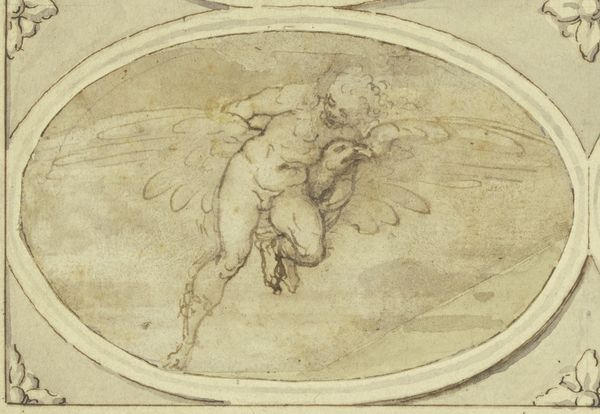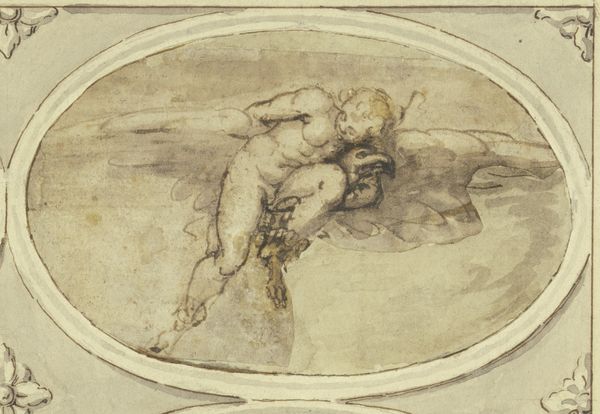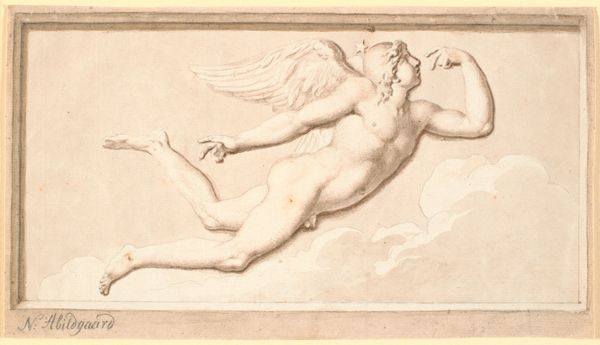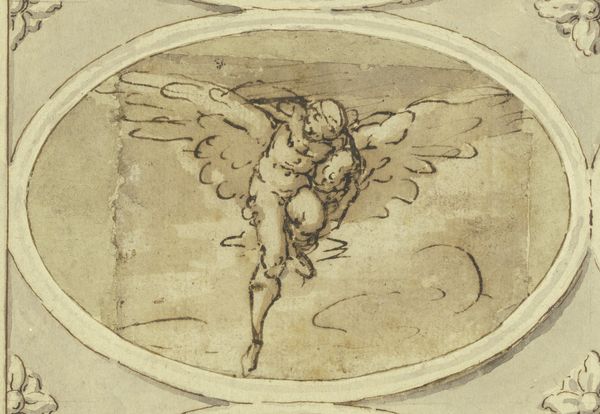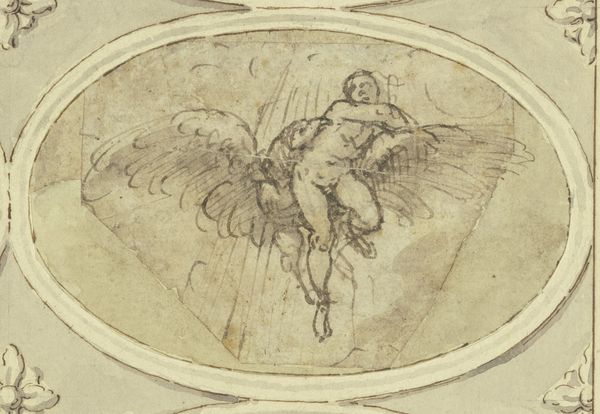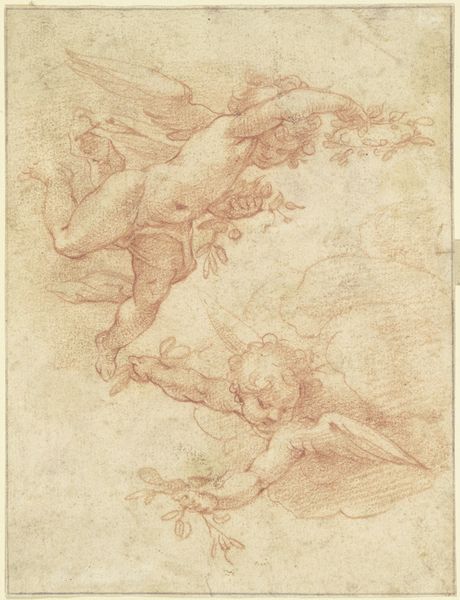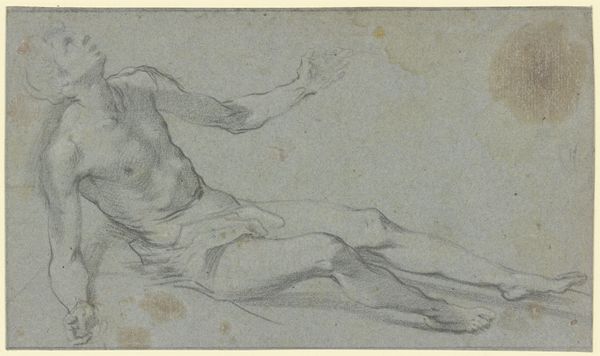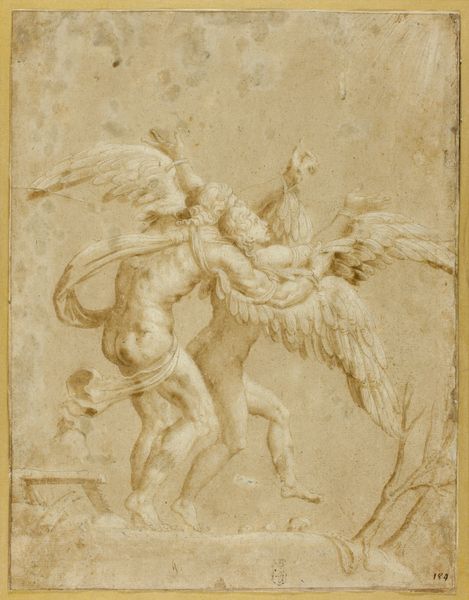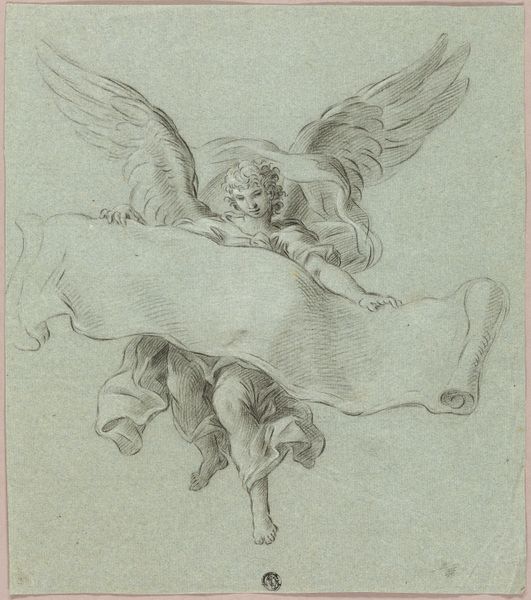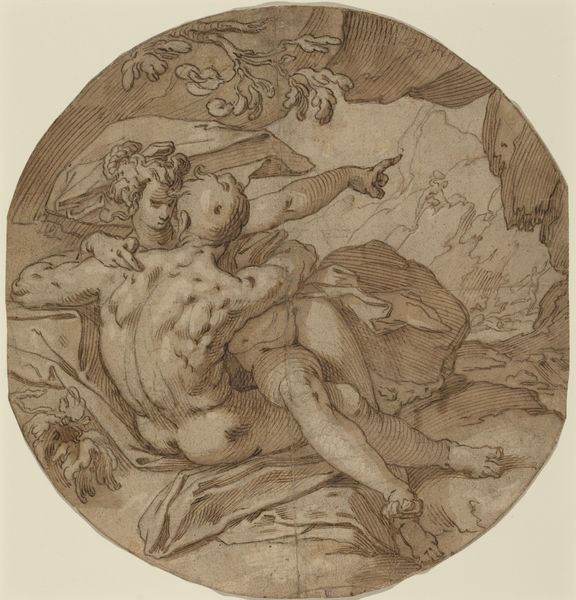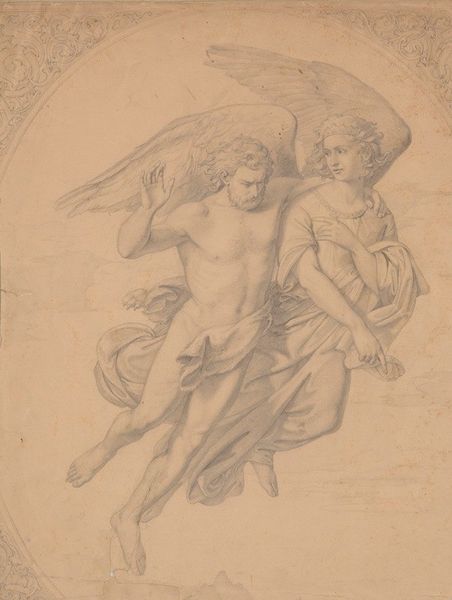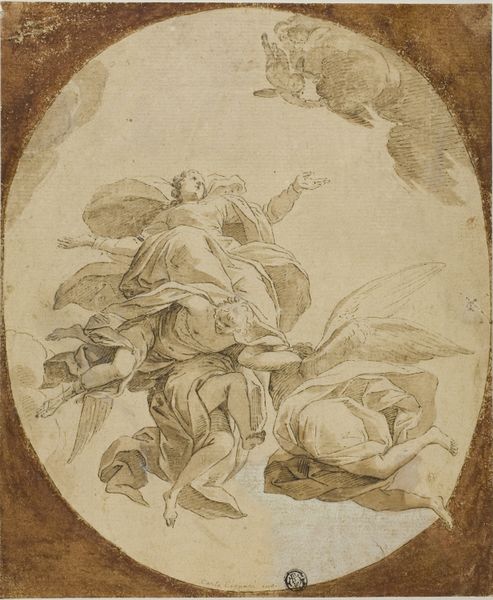
drawing, ink, indian-ink
#
drawing
#
allegory
#
charcoal drawing
#
figuration
#
11_renaissance
#
ink
#
indian-ink
#
13_16th-century
#
history-painting
Copyright: Public Domain
Curator: This drawing, "The Abduction of Ganymede," is attributed to Cherubino Alberti. It’s rendered in ink and charcoal. Editor: The muted tones give it a ghostly feel, don't they? Like a memory fading at the edges of the oval frame. It feels preliminary, like a draft. Curator: Alberti, of course, was working within a very specific artistic and social framework. Abduction myths were often used to explore power dynamics. Given the patriarchal context, Ganymede's abduction is far from a romantic adventure. What is more apparent for you: desire or violation? Editor: The means by which Alberti used ink – thin washes to give volume, and thicker lines to detail bone and muscle. But I think this is ultimately an act of domination, yes, a god asserting power through the simple act of forced elevation. A winged strongman abducting this youth for eternity. Curator: It raises uncomfortable questions about agency and representation within these classical narratives. The homoerotic implications cannot be ignored, especially as Ganymede’s status as cupbearer naturalizes Zeus’ access to Ganymede's body in an everyday way. The act has repercussions both in terms of immortality as well as the implications for exploitation. Editor: Speaking of which, how might Alberti's own labor be implicated here? As a drawing intended for reproductive engraving, how does that add another layer to the manipulation of an original form and narrative? Are we just making reproductions of abuse in Alberti's marks? Curator: Your point is insightful. By tracing the lines of production and reception, we start seeing it not just as an isolated aesthetic object but as something embedded in the social fabric, helping disseminate certain beliefs, and thus shaping historical understandings. The line work itself becomes material to ideology. Editor: Exactly! Each stage of the process and exchange becomes the grounds to question and interrogate artistic representation. To examine the implications of what we are looking at through the lens of practice. Curator: Thank you. By challenging traditional perspectives and highlighting the intersection of power, gender, and artistic production, we come to have a much better understanding of the world and how this artwork fits inside it. Editor: The piece stays with me because its historical aura has been brushed into something newly aware of process. And that kind of approach feels potent.
Comments
No comments
Be the first to comment and join the conversation on the ultimate creative platform.
